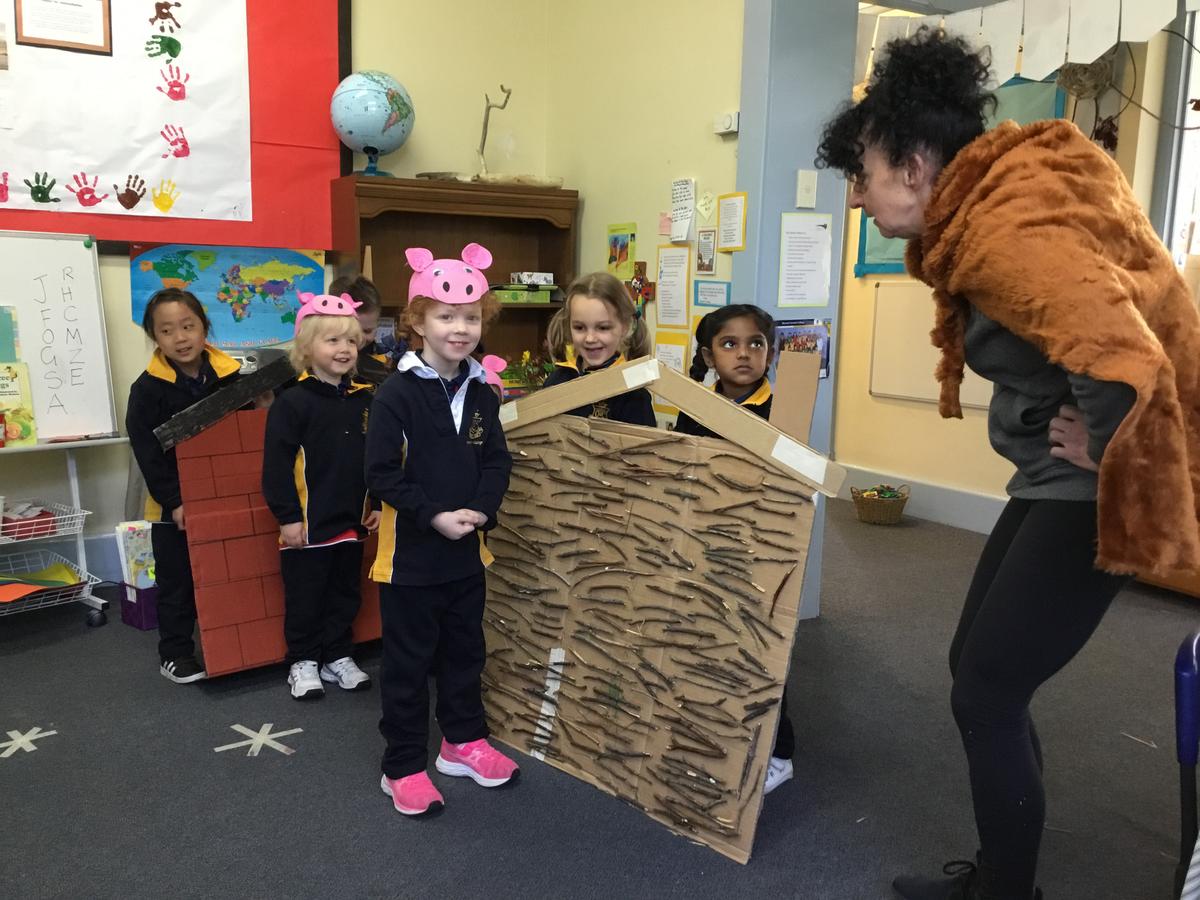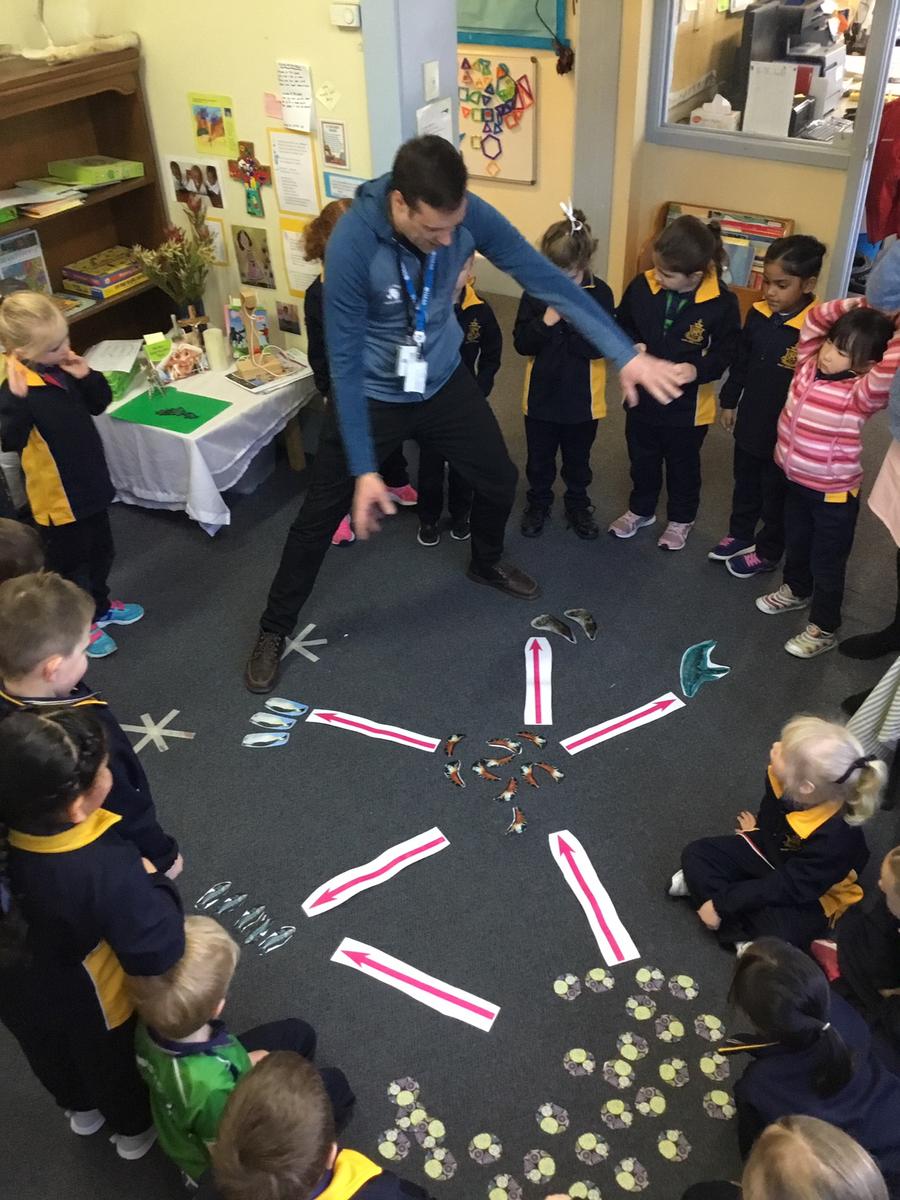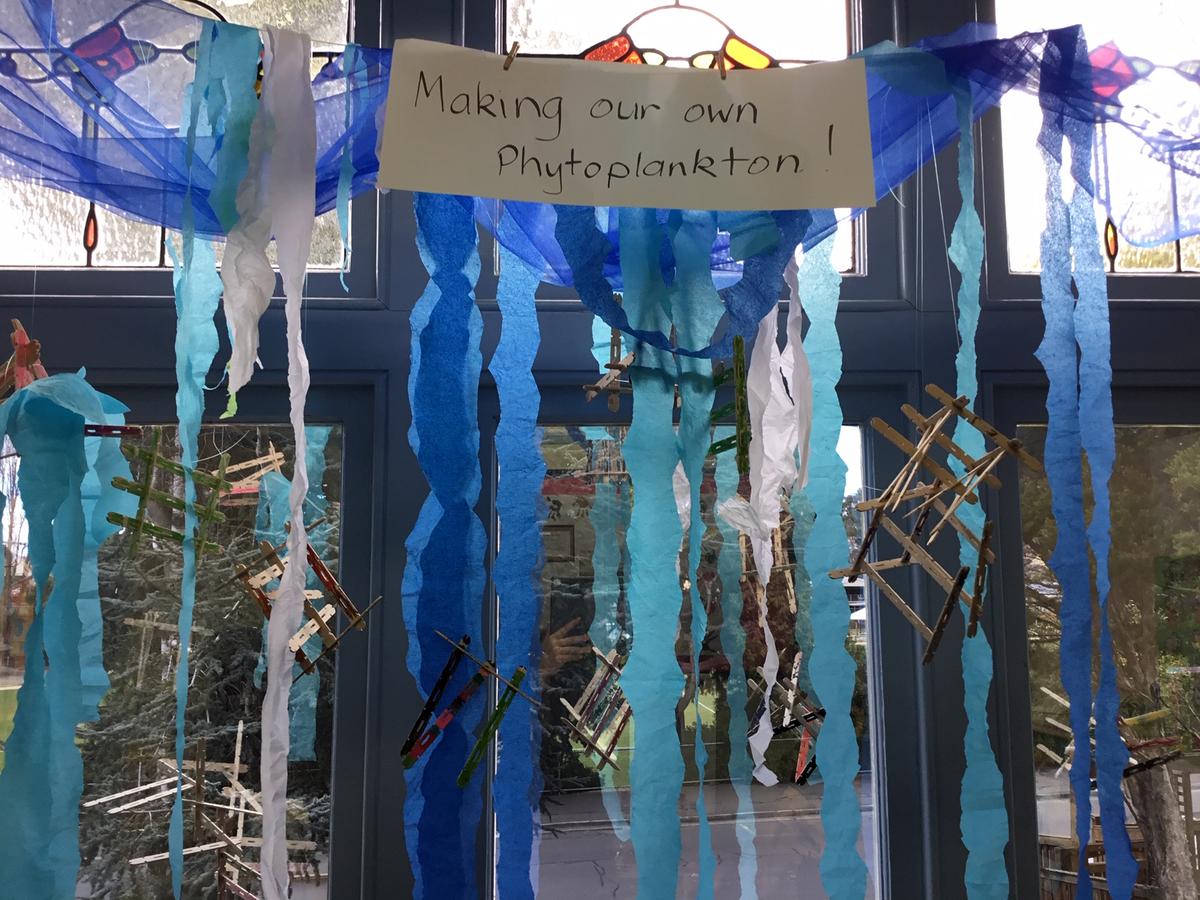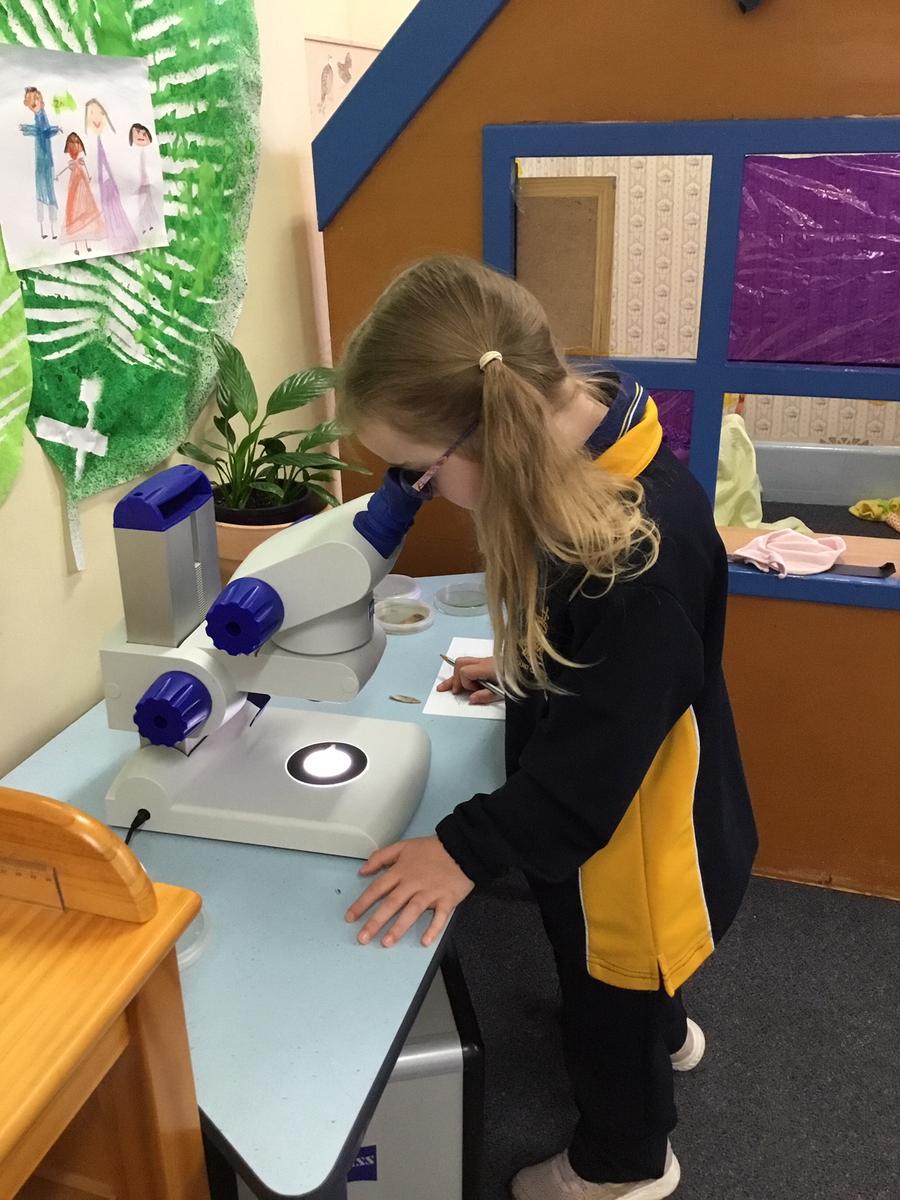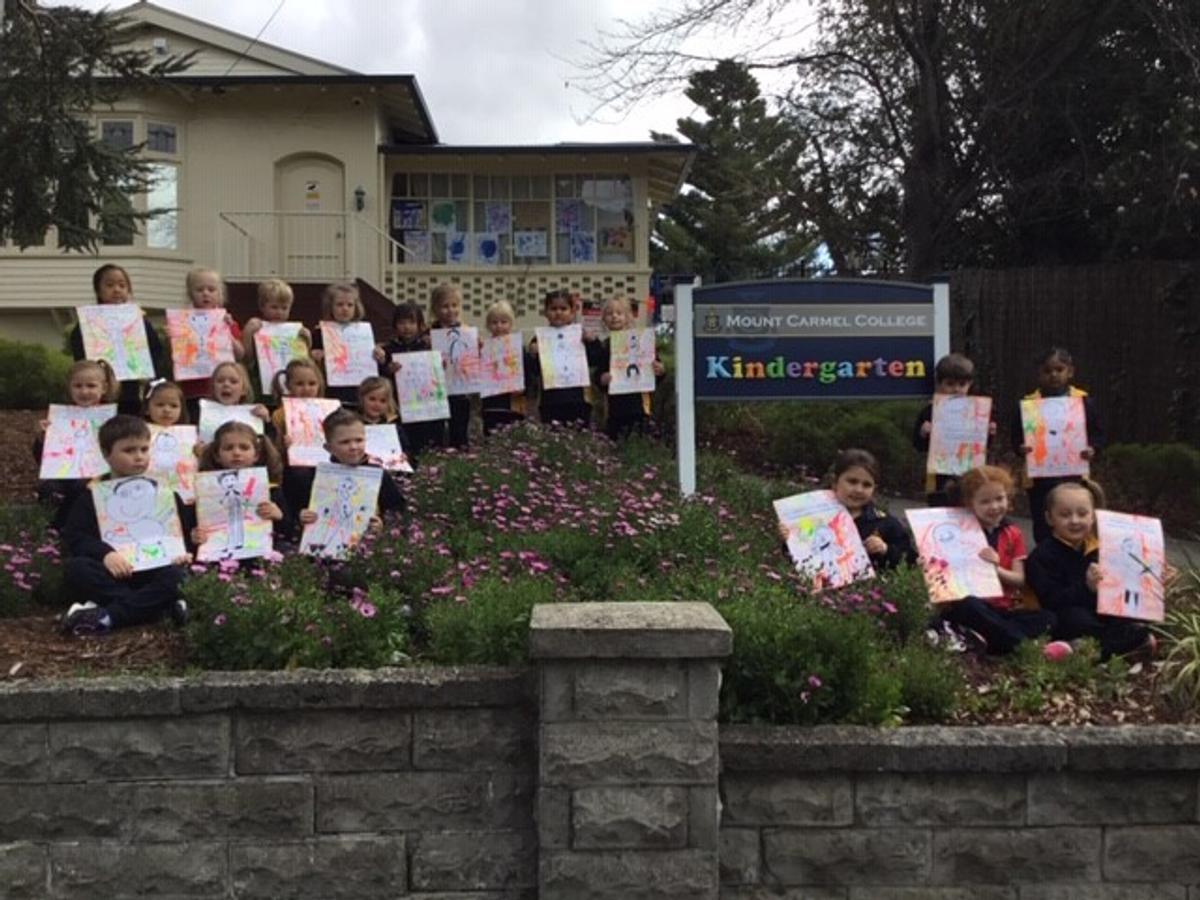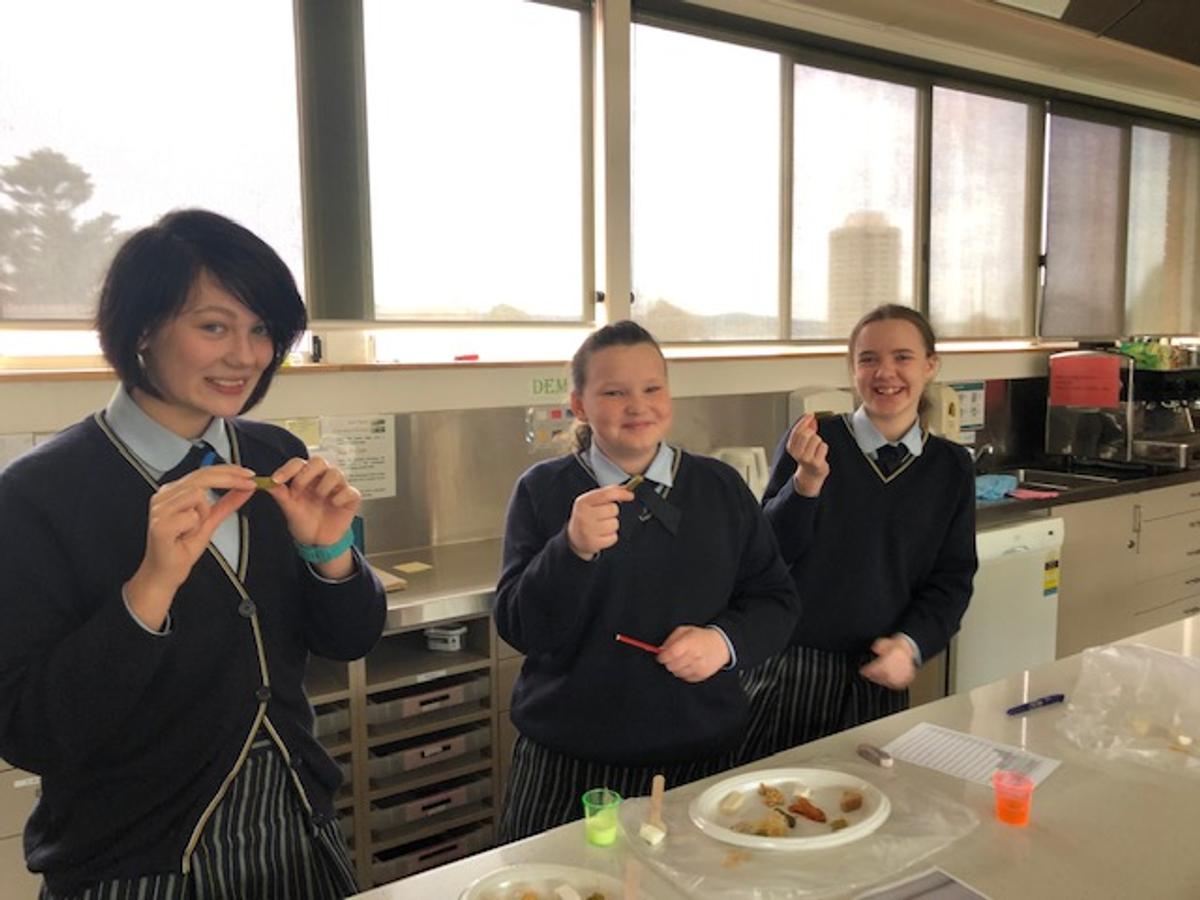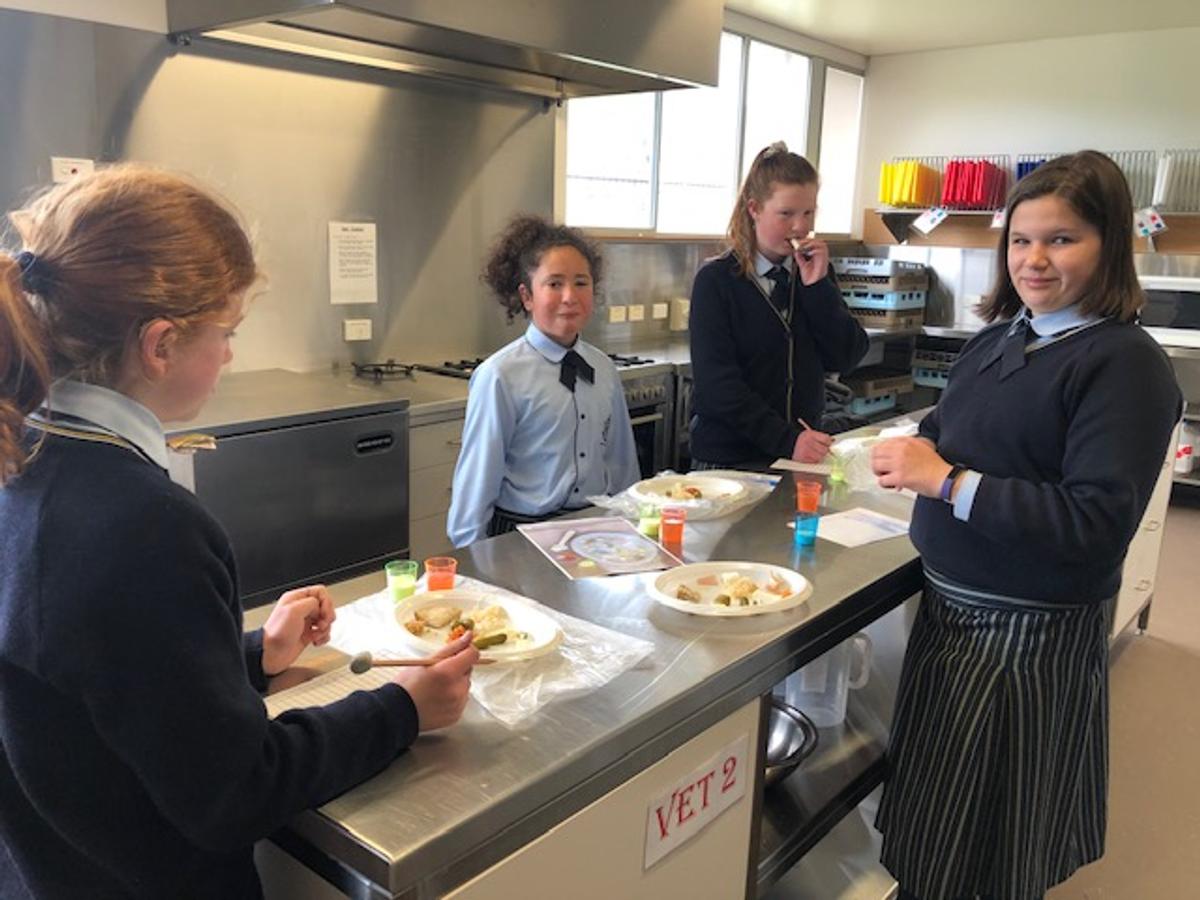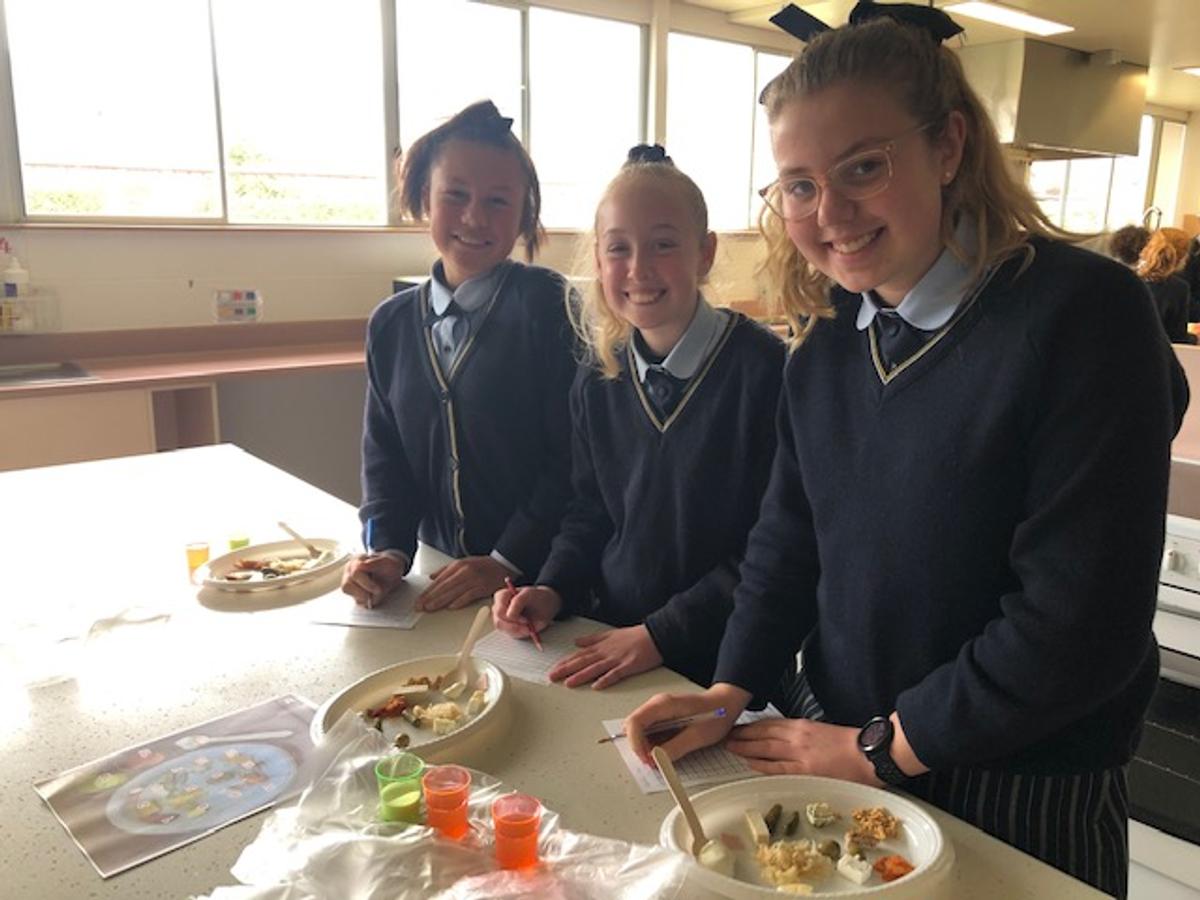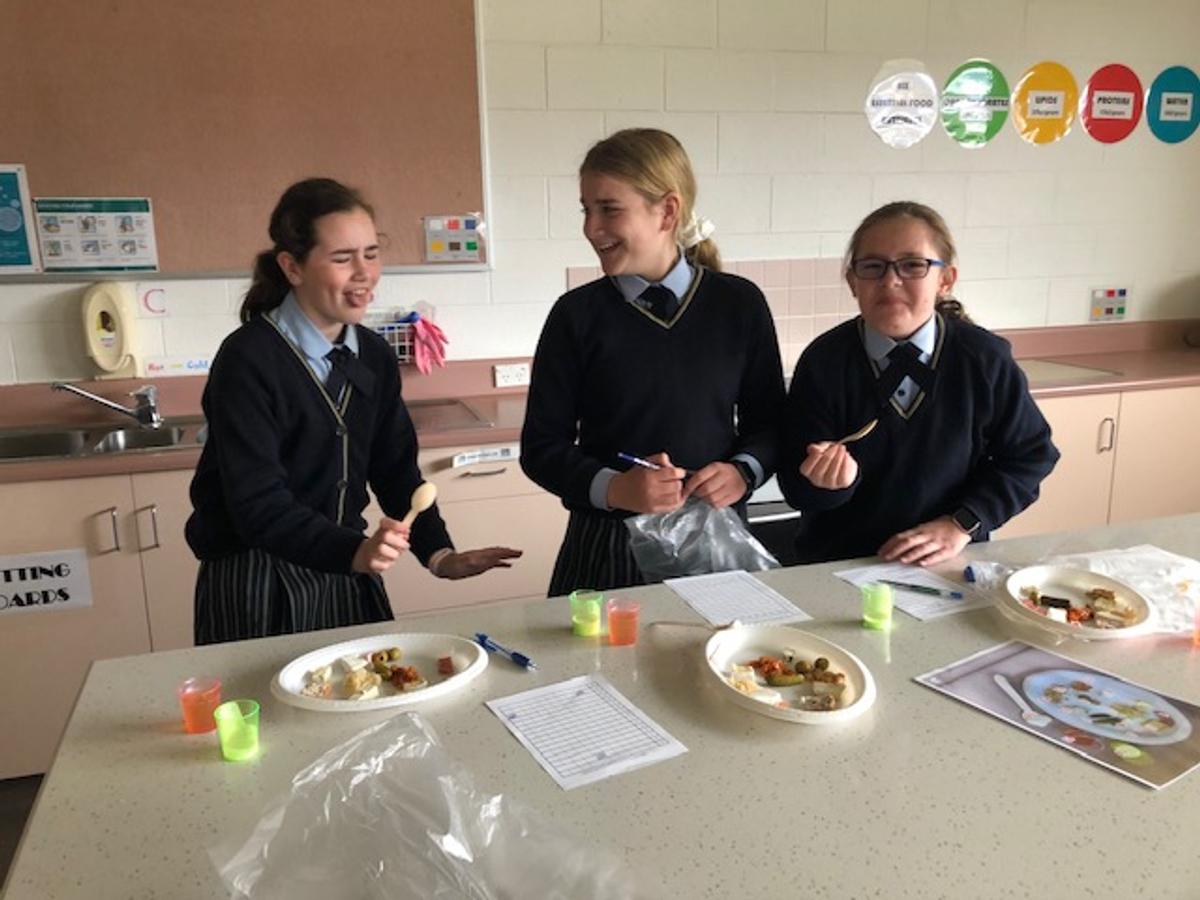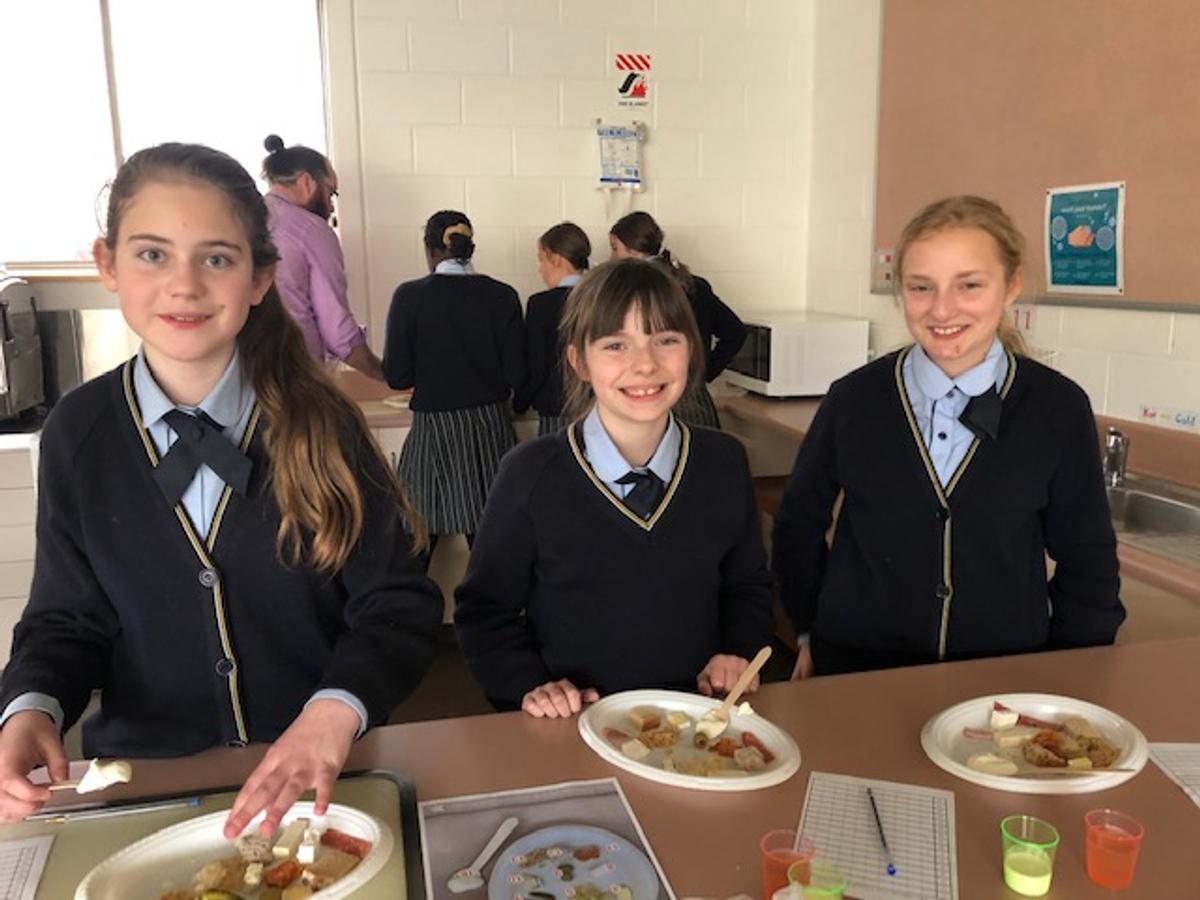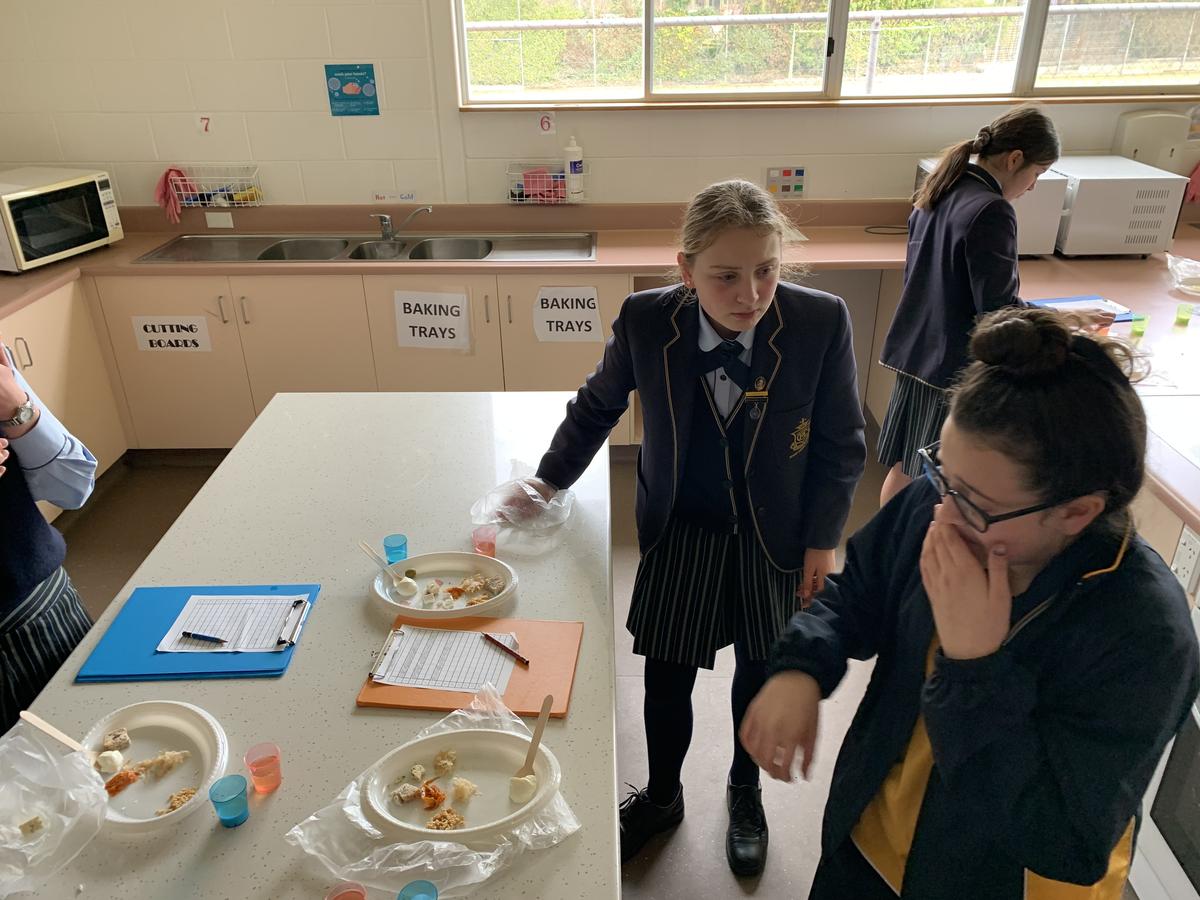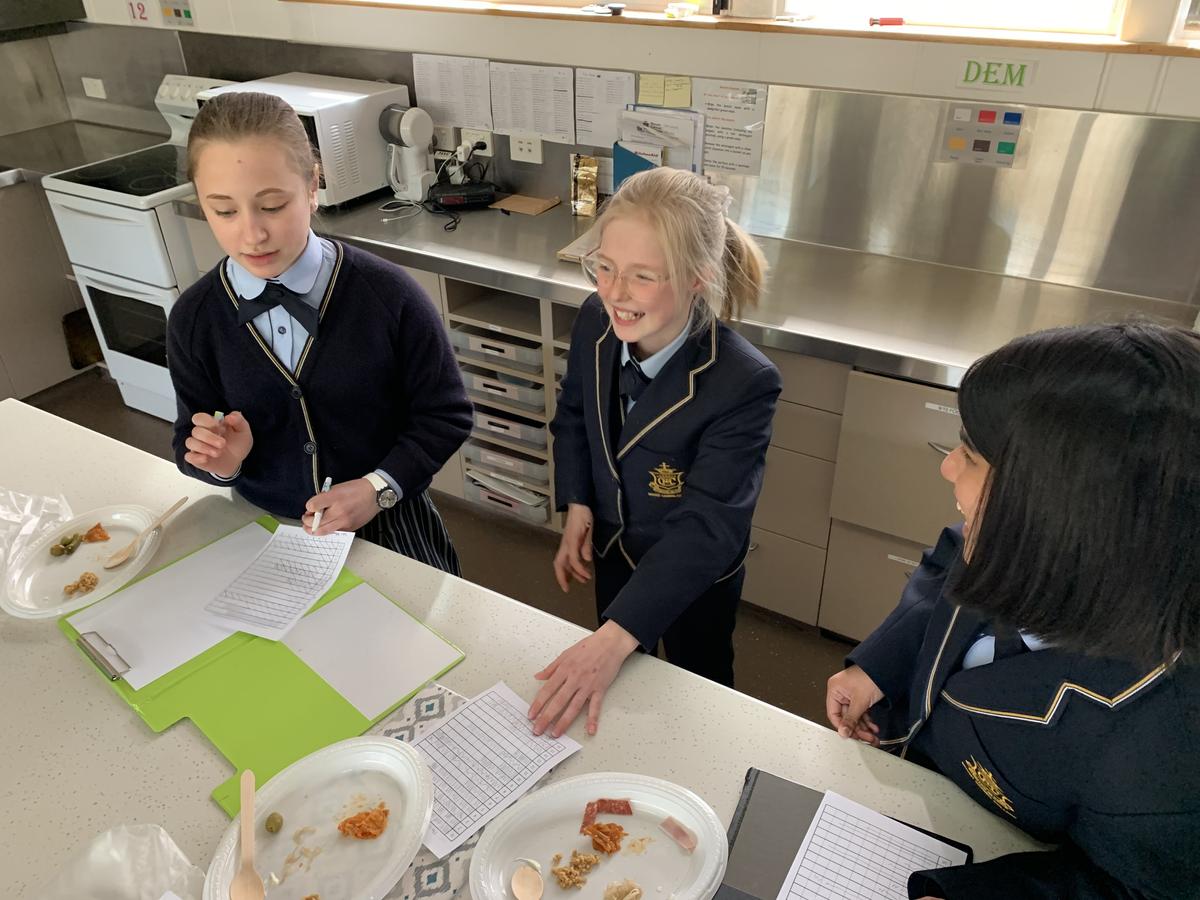Around the Primary Classrooms
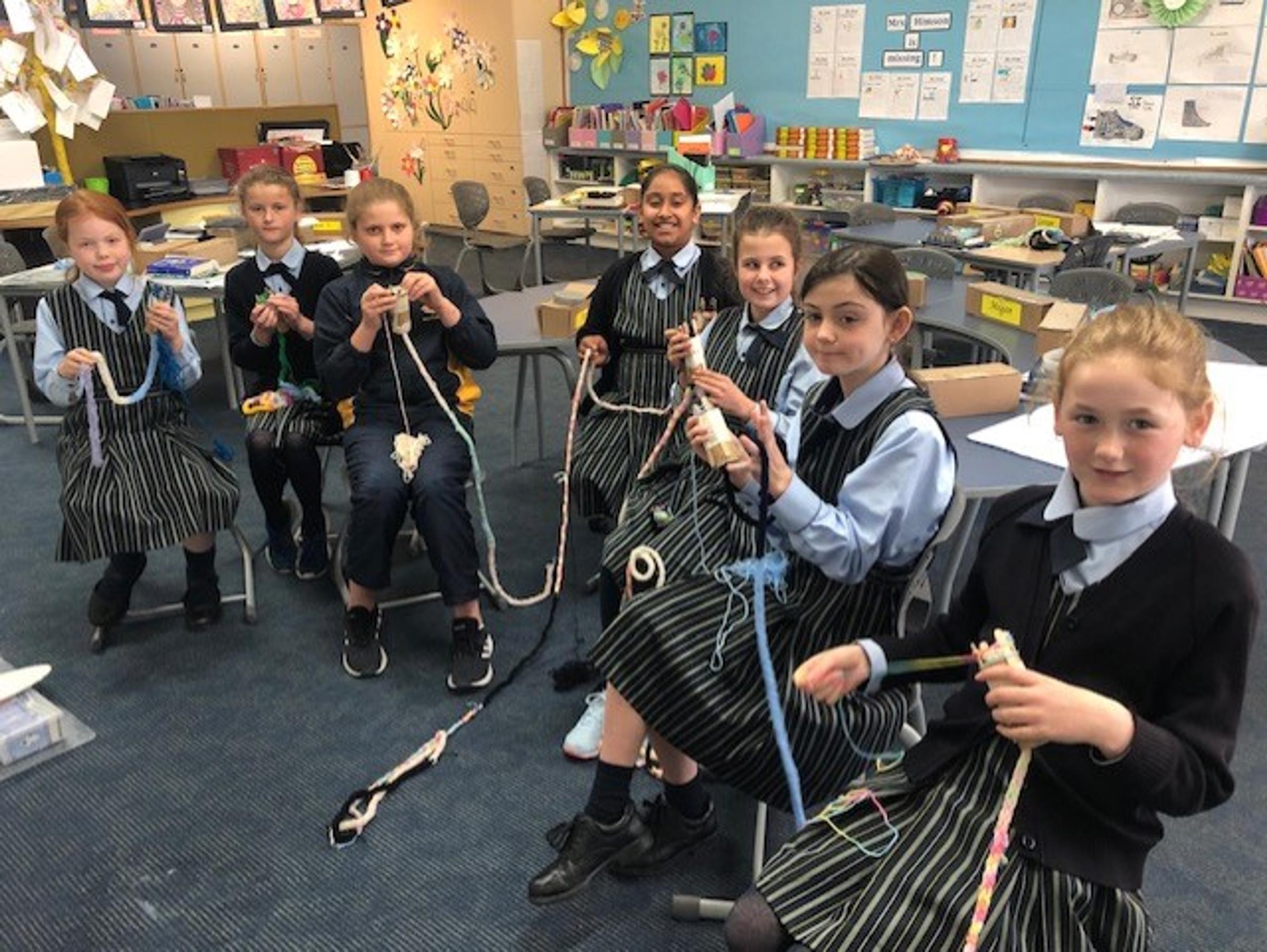
Kinder
National Science Week was celebrated in Kinder with a visit from current parent, Fraser Kennedy who is a marine biologist. Fraser shared information about Antarctica and the importance of phytoplankton for all living things on Earth.
The food web was explained, the students looked at algae, krill and phytoplankton using electronic telescopes and they also discovered ice core samples from Antarctica.
There have been many other exciting activities going on in Kinder over the past two weeks, including a discussion about the various disabilities that people live with. The students were then asked to try and draw with textas only using their feet.
The Three Little Pigs tale was re-enacted, the students began to organise their own games away from close adult supervision and created some gorgeous Father's Day illustrations.
Year One
In Year One we have been looking at the strategies we can use to solve multiplication word problems. We have learnt how to skip count in 2's, 5's, 10's and some students even know some skip counting in 3's. We can draw arrays, use groups of or a blank number line to help us in solving multiplication number sentences. we love using the correct name for strategies, particularly commutativity. Commutativity means 'turn around' facts so 5 x 4 is the same answer as 4 x 5.
We have also looked at what being a good friend looks like, feels like, and sounds like. We are making friendship boxes and inside our friendship box are cards from our classmates stating something they really like about us. Everyone is loving this activity and can't wait until we finish them and are able to read all our cards.
Year 4
As the Primary students complete the finishing touches to their artworks in readiness for the Arts Festival, the Year 4 students have taken up knitting. There is no doubt that knitting enthusiasts would quickly highlight the benefits of knitting. In fact, research shows that knitting provides a host of brain and wellbeing benefits to people of all ages. It teaches mathematics, hand eye and brain coordination; sensory integration and resiliency of habit as patience and persistence are needed in order to create something beautiful and purpose filled. The Year 4 students are looking forward to displaying their spiral wall displays under the guidance of Mrs Jan Peterwood. On this note, thank you to Mrs Jan Peterwood for her work in Year 4 this term in the absence of Mrs Sharon Himson.
Year 5 White
The girls in Year 5 White have been honing their research skills delving into the lives and history of some Catholic saints. The students have discovered that the lives of these amazing people were not always easy, but they always remained faithful to God.
- Legend has it the St Helena found the cross Jesus was crucified on. Mabel Sangwell
- St Patrick was kidnapped by pirates when he was fourteen. Ines Gadon
- There is a story that says that when Jesus was a baby, St Christopher carried him across a river. Maggie Smythe
- St Matilda was once queen of Germany. Matilda Keeling
- St Catherine of Sienna had the stigmata, but it was only visible to her. Poppy Dobson
- St Gemma Galgani met her guardian angel. Matilda Paine
- St Lucy was burned at the stake, but as she did not die, she was then stabbed. Ivy Bresnehan
- St Martha was friends with Jesus and his disciples. Tayla Oram
- St Rita became a wife and a mother at 12 years old. Megan Breach
Year 6
Marvellous Micro-organisms
In week five, Year Six Navy and Year Six White spent our middle block tasting a range of foods for our new Science unit of work, “Marvellous Micro-organisms.”
In this unit, we will learn about the science behind food, focusing on how microorganisms like bacteria create the food we eat. We will also explore how the food we eat affects our mood, weight, sleep and attentiveness.
All the foods we eat have different purposes, from keeping us healthy to repairing our bodies. We learnt that everything we munch on can alter the way we react or how fast energy is released. We all watched a TedEd video explaining how the food we eat affects our brains. We watched the video twice because the information was very rich. Before we watched the video, we wrote down everything that we knew about food affecting our brains. After watching the video once, we wrote all the information that we learnt the second time around.
Some interesting foods we ate during the taste test were:
- salami
- wholemeal bread
- tofu
- pickles
- blue cheese
- kimchi
- tempeh
- kombucha
- Greek yoghurt
Most of us tried all the foods with the exception of those who have allergies, those who practise a religion with food restrictions, or people who are vegan or vegetarian.
Many Year Sixes are looking forward to creating our Healthful Cafés, featuring food created by the actions of microorganisms. We will be split into groups of four with two students from each class. Together, the groups will decide on a café name and a healthy menu.
Thank you to Mr Wierenga, Ms Sluyters and Mrs Wilson-Haffenden for taking the time to prepare our tasting plates.
Eva Sommerville, Ash Ryan and Eli Ims

